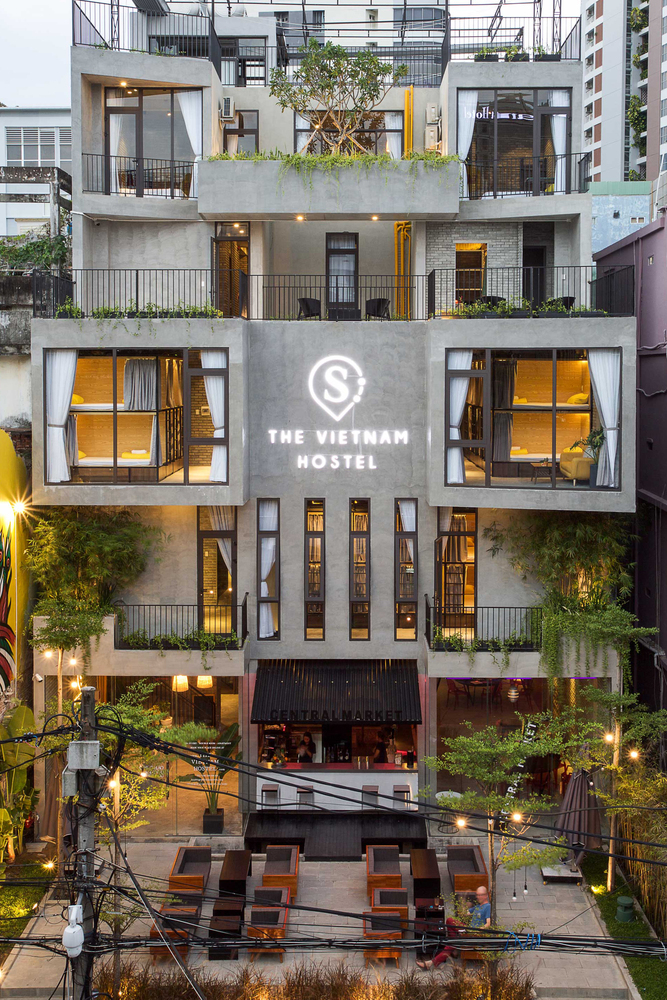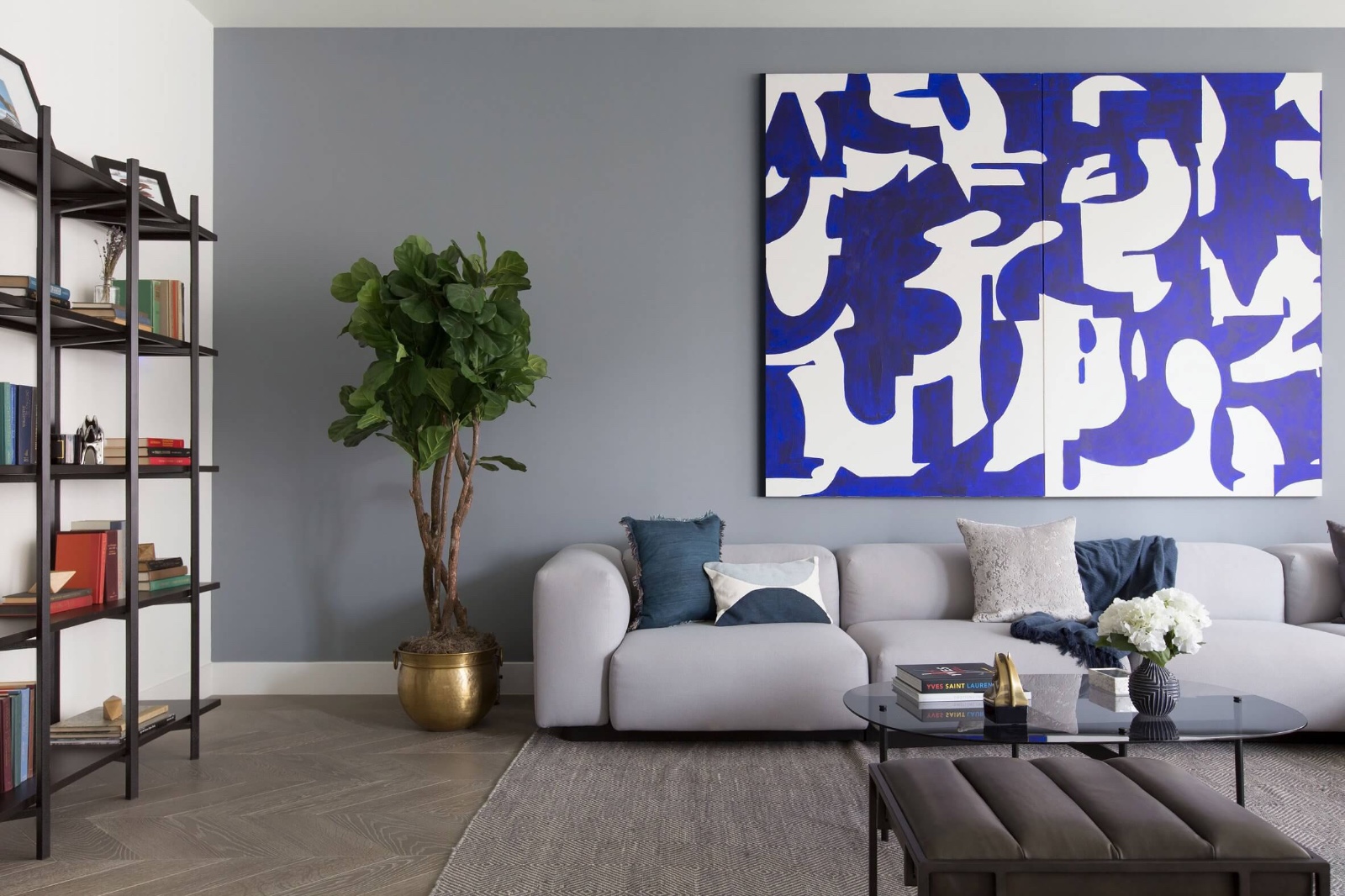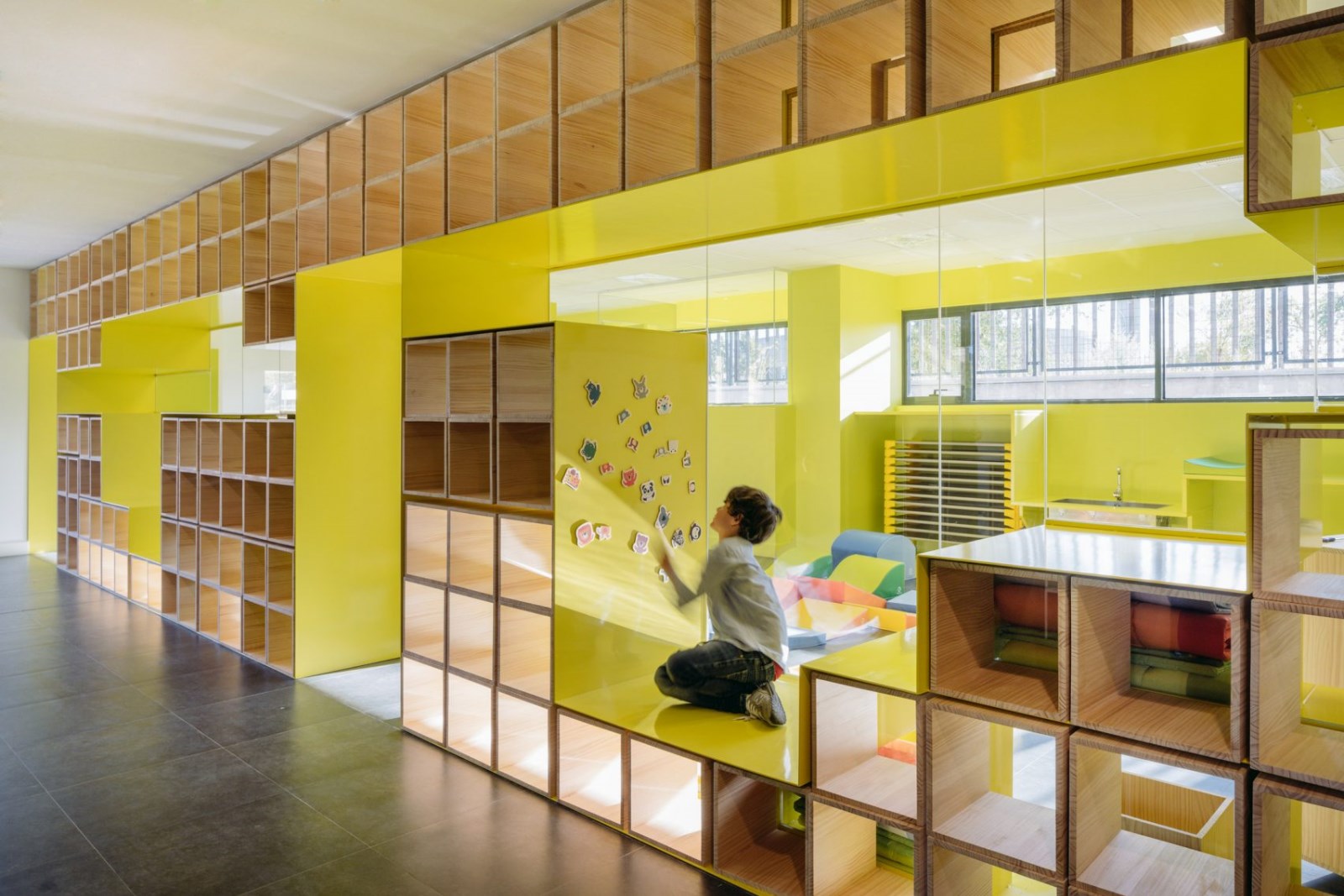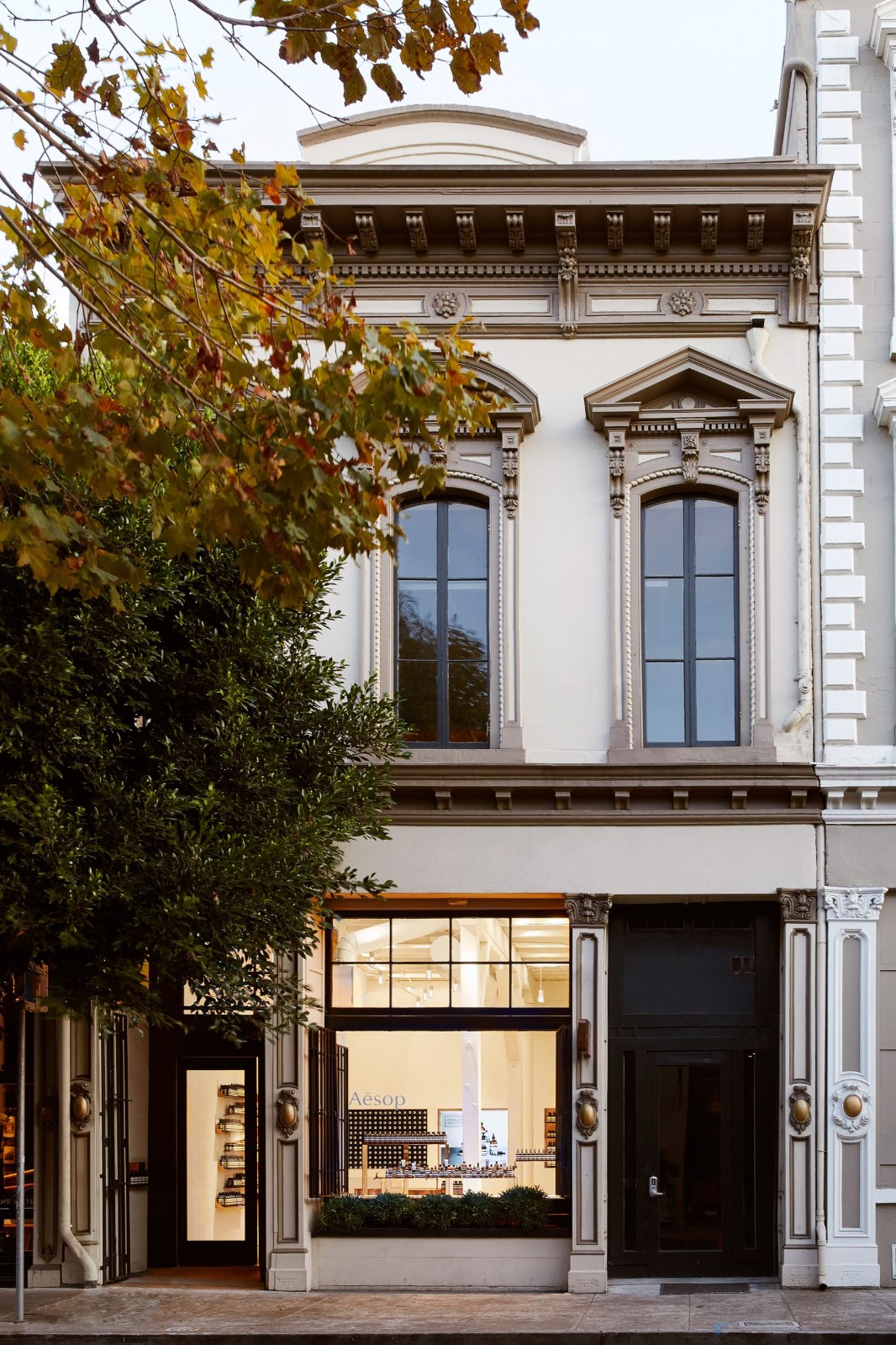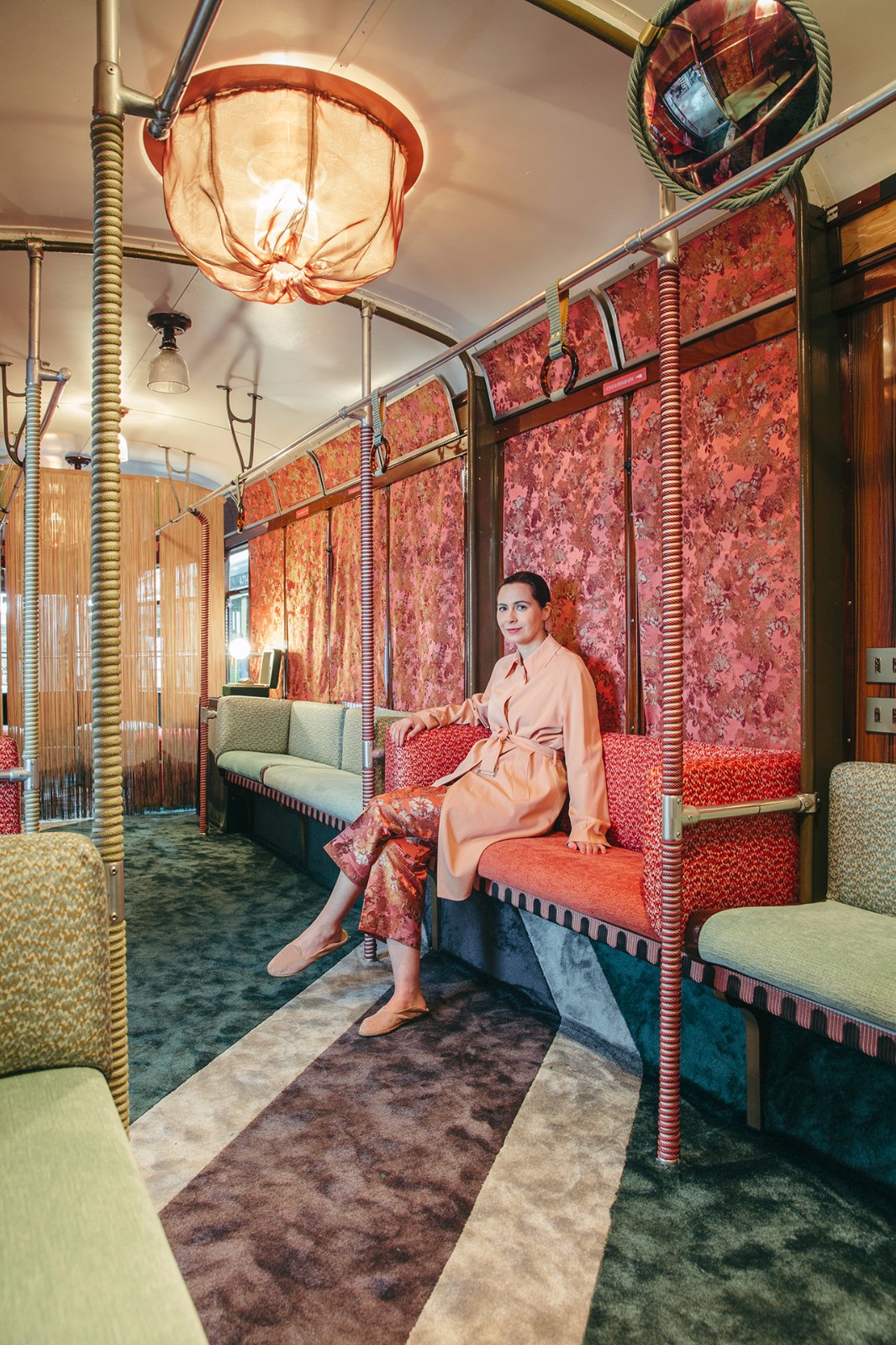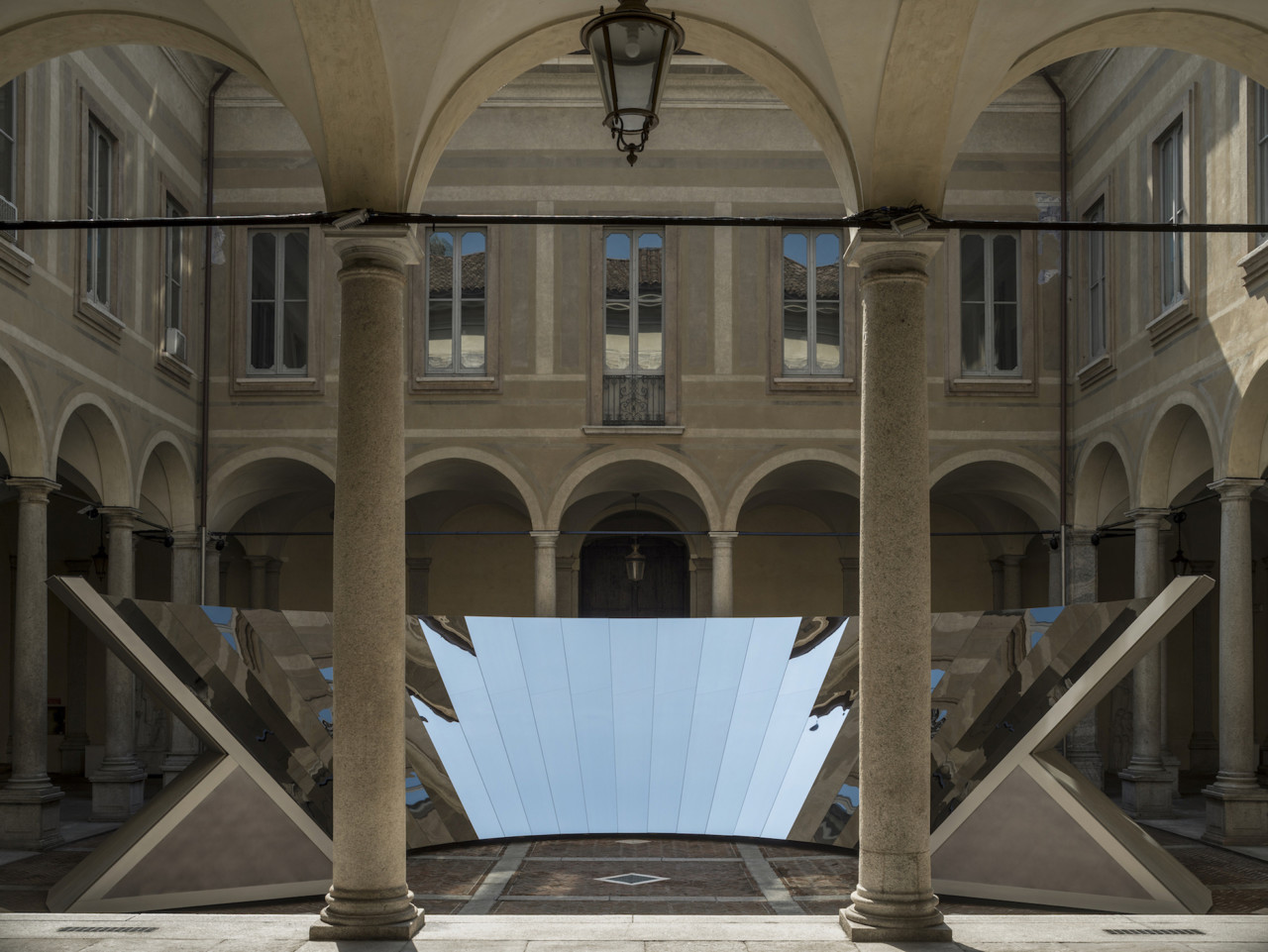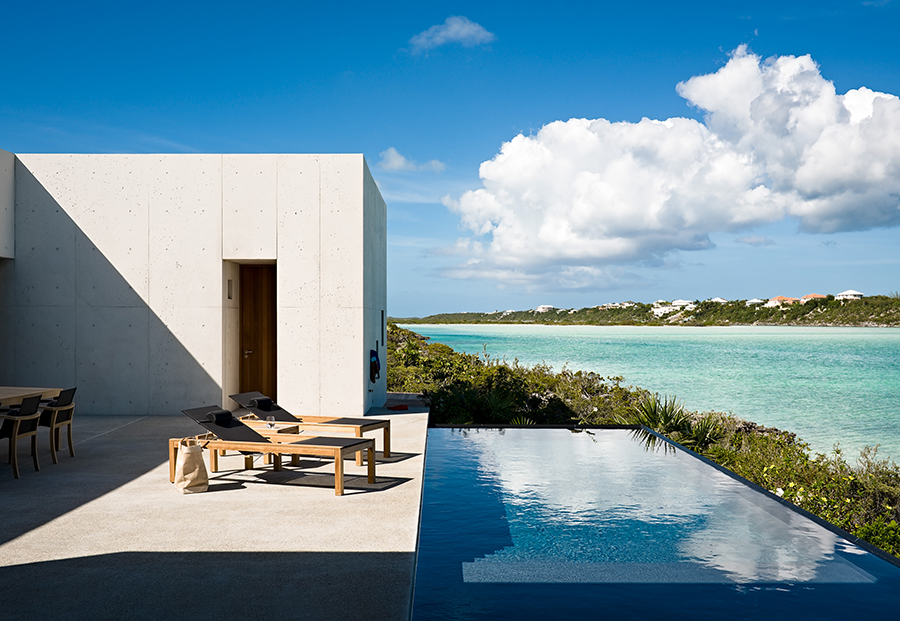Nature - Environment Learning Centre Bureau SLA
2015-12-21 02:00
架构师提供的文本描述。在阿姆斯特丹,每个小学生都有自己的6平方米花园可供照料。这些学生还参加了在阿姆斯特丹各地专门为这一目的而设的建筑物中学习自然和环境知识的班级。然而,从今年起,阿姆斯特丹Noord成为了专门为此目的而设计的新Bui lding的主人:自然
Text description provided by the architects. In Amsterdam, every primary school student is provided with his or her own 6m2 garden to care for. These students are also enrolled in classes where they learn about nature and the environment, held in one of the buildings dedicated to the purpose throughout Amsterdam. As of this year though, Amsterdam Noord becomes host to a new bui lding designed specifical ly for this purpose: the Nature & Environment Learning Centre. This new building replaces two temporary structures (which housed the program for the previous five years). In addition to being the first purpose-designed and bui ld centre in the program, it’s also unique in that it works both as a classroom and as an educational tool itsel f: the bui lding’s sustainabi lity can be seen and be felt by al l who come in contact with it.
As would be expected, the Nature & Environment Learning Centre (NME) is energy neutral. This in and of itsel f is not unusual: the nonconsumption of fossi l fuels is a property of almost any new bui lding (or at least it should be). What makes the energy management of the NME interesting is that its sustainability is visible, tangible, and easily perceptible to even the most casual observer. For example, the seemingly eccentric shape of the building turns out to be a completely functional one, dictated by a desire to achieve optimal orientation of the roof towards the sun, thereby maximizing the efficiency of the bui lding’s solar col lectors. There are also the large concrete slabs - Trombe Wal ls, more about those below - at the front of the bui lding, which heat up fresh air before it enters the classrooms, thus placing less demand on the heating system.
NME的位置,位于阿姆斯特丹Noord学校花园的中心,几乎是完美的:靠近场地入口处的长方形地块,最理想的方向是花园。唯一重要的挑战是,拟议中的结构的长长的正面并不完全是朝南的,这意味着别尔丁的太阳能采煤机不会是最佳的选择太阳射线的最佳位置。但是,通过将屋顶的山脊精确地沿东西轴定位-与别尔丁-特沃尔河相抵-完成了一些工作:第一,它通过确保太阳能采煤机精确朝南,解决了太阳能电池板的问题;第二,它为别伊岭提供了非常独特的形状。该中心屋顶的设计也为学生们提供了另一个学习机会,因为它离地面很近:在屋顶的最低点,即使是小的孩子也能很容易地看到太阳能电池板。在别伊岭内部,平面图几乎是对称的,入口在中间。左边和右边是同等大小的教室,一楼有相同的房间,用作办公空间和食堂。中间什么也没有,透过玻璃门一直到教学楼远处的学校花园。
The location of the NME, situated in the middle of the school gardens of Amsterdam Noord, was just about perfect: a rectangular plot near the entrance of the site, optimal ly oriented to the gardens. The only significant chal lenge was that the long facade of the proposed structure was not precisely south-facing, which meant that the bui lding’s solar col lectors would not have been optimal ly placed for col lecting the sun’s rays. But by positioning the ridge of the roof exactly along an east-west axis - offset from the wal ls of the bui lding - t wo things were accomplished: firstly it solved the solar col lection issue by ensuring the solar col lectors were precisely south-facing, and secondly it provided the bui lding with its very distinctive shape. The design of the Centre’s roof also provided another learning opportunity for students due to its close proximity to the ground: at the roof ’s lowest point even smal l chi ldren can easi ly see the solar panels. Inside the bui lding, the floor plan is almost symmetrical, with the entrance in the middle. On the left and right are classrooms of equal size and on the first floor t wo identical rooms serve as a office space and a canteen. In the middle there is nothing, which provides a view through the glass entrance doors straight through to the school gardens on the far side of the building.
北面由大约一米宽,从上到下的窗框组成。可操作的窗户部件覆盖着白色漆木面板,提供了一个不间断的长垂直窗框图案。在南侧,与传统窗户混合在一起的是安装在玻璃窗后面的八个黑色混凝土板。这些都是我们所知的特伦贝·沃尔斯(Trombe Wal)。20世纪60年代法国工程师Félix trombe的设计(1906-1985年)。虽然他们在可持续发展的布依德设计中从未取得过重要的立足点,但特伦贝·沃尔斯提供了一种简单而可靠的无源太阳能加热解决方案。安装在外窗后面的混凝土板在阳光下加热。在玻璃和平板之间的缝隙中,新鲜空气又被平板加热。从别伊岭的内部,有一个可以打开或关闭的小板条。在寒冷的日子里,板条被打开。把板条加热的新鲜空气加热到别伊岭的内部。在温暖的一天,板条保持关闭,保持温暖的空气。
The north facade consists of window frames of about a meter wide, top to bottom. Operable window parts are clad with white lacquered wooden panels, providing an uninterrupted pattern of long vertical window frames. On the south side, mixed in with traditional windows, are eight dark concrete slabs - sitting behind glass windows - mounted to the facade. These are what are known as Trombe wal ls, a 1960s design of the French engineer Félix Trombe (1906 - 1985). A lthough they’ve never gained a significant foothold in the design of sustainable bui ldings, Trombe wal ls provide a simple and intel ligent passive solar heating solution. The concrete slab - mounted behind the exterior window - is heated up by sunlight. In the gap between the glass and the slab, fresh air is, in turn, heated by the slab. From the inside of the bui lding there is a smal l slat that can be open or closed. On a cold day, the slat is opened, al lowing the slab-heated fresh air to heat the interior of the bui lding. On a warm day, the slat is kept closed, keeping the warm air out.
The Nature & Environment Learning Centre shows that Trombe-wal ls not only work very wel l, but that they can also provide a detai l that is both architectural ly and aesthetical ly pleasing. In order to increase the surface area of the concrete wal ls a pattern of recessed hal fshel ls is fitted. This pattern can literal ly be read - in brai l le - as an anthology of Dutch nature poetry.
该中心的屋顶和末端瓦尔斯覆盖了木石板,这并不是起到防风的作用,但起到了隐藏沥青屋顶的作用。使用石板也意味着太阳能电池板-放置在槽缝中的缝隙-看起来与屋顶平齐,而不是坐在屋顶上(这是典型的眼罩)。木包层还提供了另一个表达的机会:在大多数木质布景中,板条要么是水平的,要么是垂直的。但是,当木材-就像本案中的情况一样-被用作纯粹的装饰元素时,更多的可能性是可以想象的。例如,木地板以丰富多样的铺设模式存在,具有同等异国情调的名称:人字形或块状图案,匈牙利点的范思哲(Versai L Les)。在自然与环境学习中心,木包层由三块板组成,其尺寸与太阳能电池板相匹配。
The Centre’s roof and end wal ls are clad with wooden slats, which don’t function as weather-proofing, but serve to hide the bitumen roofing from view. Using the slats also means that the solar panels - placed in gaps in the slotting - appear flush with the roof, instead of sitting on top of it (which is typical ly an eyesore). The wood cladding also provided another opportunity for expression: in most wood-clad bui ldings the slats are arranged either horizontal ly or vertical ly. But when wood - as in this case - is used as a purely decorative element, many more possibi lities are imaginable. Wood flooring, for example, exists in a rich variety of laying patterns, and with equal ly exotic names: herringbone or block pattern, Hungarian Point of Versai l les. In the Nature and Environment Learning Centre the wood cladding consists of a block pattern of three boards, whose dimensions are matched to the solar panels. And final ly, there is something of a residential aspect to the Nature & Environment Learning Centre: the east exterior wal l count 21 designer birdhouses: 20 for swifts and one for a bat.
Location Heggerankweg 871, 1032 JC Amsterdam, The Netherlands
Design Team Peter van Assche, Ninja Zurheide, Ane Arce Urtiag, Joti Weijers Coghlan
Photographs Filip Dujardin
 举报
举报
别默默的看了,快登录帮我评论一下吧!:)
注册
登录
更多评论
相关文章
-

描边风设计中,最容易犯的8种问题分析
2018年走过了四分之一,LOGO设计趋势也清晰了LOGO设计
-

描边风设计中,最容易犯的8种问题分析
2018年走过了四分之一,LOGO设计趋势也清晰了LOGO设计
-

描边风设计中,最容易犯的8种问题分析
2018年走过了四分之一,LOGO设计趋势也清晰了LOGO设计
























































































